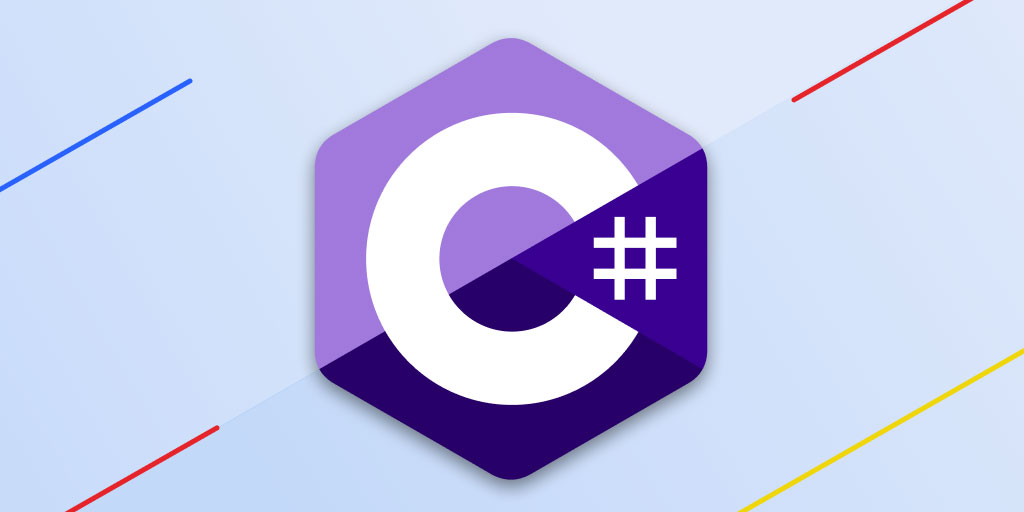 Backend Development
Backend Development
 C#.Net Tutorial
C#.Net Tutorial
 What are C# attributes and how to create a custom attribute?
What are C# attributes and how to create a custom attribute?
What are C# attributes and how to create a custom attribute?
Jul 19, 2025 am 12:07 AMTo create your own C# custom properties, you first need to define a class inherited from System.Attribute, then add the constructor and attributes, specify the scope of application through AttributeUsage, and finally read and use them through reflection. For example, define the [CustomAuthor("John")] attribute to mark the code author, use the [CustomAuthor("Alice")] to modify the class or method when applying, and then obtain the attribute information at runtime through the Attribute.GetCustomAttribute method. Common uses include verification, serialization control, dependency injection and unit testing. It is recommended to keep the attribute logic lightweight and reasonably limit its scope of use.

C# attributes let you add metadata or declarative information to your code elements like classes, methods, properties, etc. They're commonly used for things like serialization, validation, logging, and more. You've probably seen them before, like [Serializable] or [Obsolete] . But what if you want to create your own?

Here's how to understand and build your own custom attribute in C#.
What Exactly Is a Custom Attribute?
An attribute is essentially a class that inherits from System.Attribute . When you create your own, you're defining a type that can be attached to various parts of your code to provide additional information at runtime (or compile time).

For example, you might create a [CustomAuthor("John")] attribute to mark who wrote a specific class.
Custom attributes are useful when you want to inspect code structure or behavior through reflection, or when you're building frameworks or libraries that need to respond to metadata.

How to Create a Custom Attribute
Creating a custom attribute is straightforward. Here's how:
- Define a class that inherits from
Attribute - Add constructors and properties as needed
- Apply the attribute to code elements
Here's a simple example:
[AttributeUsage(AttributeTargets.Class | AttributeTargets.Method)]
public class CustomAuthorAttribute : Attribute
{
public string AuthorName { get; }
public CustomAuthorAttribute(string authorName)
{
AuthorName = authorName;
}
}Now you can use it like this:
[CustomAuthor("Alice")]
public class MyService
{
[CustomAuthor("Bob")]
public void DoWork()
{
// Method logic
}
}A few notes:
- You can control where the attribute can be applied using
[AttributeUsage]. - You can include multiple parameters or properties.
- The constructor defines what you can set when applying the attribute.
How to Use Custom Attributes in Code
Once you've defined and applied your custom attribute, you'll probably want to access it at runtime. That's where reflection comes in.
Here's how you can check for your [CustomAuthor] attribute on a class or method:
var type = typeof(MyService);
var classAttribute = (CustomAuthorAttribute)Attribute.GetCustomAttribute(
type,
typeof(CustomAuthorAttribute));
Console.WriteLine($"Class author: {classAttribute?.AuthorName}");
var method = type.GetMethod("DoWork");
var methodAttribute = (CustomAuthorAttribute)Attribute.GetCustomAttribute(
method,
typeof(CustomAuthorAttribute));
Console.WriteLine($"Method author: {methodAttribute?.AuthorName}");This is useful in scenarios like:
- Logging or auditing code authors
- Building a plugin system that scans for specific attributes
- Custom validation or behavior based on metadata
Just remember: reflection can be slow, so avoid doing it in performance-critical paths unless you cache the results.
Common Use Cases and Tips
- Validation attributes – Like
[Required]or[Range]in ASP.NET - Serialization control – For example,
[JsonProperty("name")]in JSON libraries - Dependency injection markers – Some frameworks use attributes to auto-register services
- Testing frameworks – Attributes like
[Test]or[SetUp]are common in unit testing tools
Tips:
- Keep your attribute logic lightweight – they're metadata, not business logic
- Use
AttributeUsagecarefully – restrict to only what makes sense - You can combine attributes with reflection-based services to build extended systems
So that's the core of custom attributes in C#. You define a class, apply it to code elements, and then use reflection to read and act on it later. It's not complicated once you get the hang of it, but it opens up a lot of possibilities for clean, extended code design.
Basically that's it.
The above is the detailed content of What are C# attributes and how to create a custom attribute?. For more information, please follow other related articles on the PHP Chinese website!

Hot AI Tools

Undress AI Tool
Undress images for free

Undresser.AI Undress
AI-powered app for creating realistic nude photos

AI Clothes Remover
Online AI tool for removing clothes from photos.

Clothoff.io
AI clothes remover

Video Face Swap
Swap faces in any video effortlessly with our completely free AI face swap tool!

Hot Article

Hot Tools

Notepad++7.3.1
Easy-to-use and free code editor

SublimeText3 Chinese version
Chinese version, very easy to use

Zend Studio 13.0.1
Powerful PHP integrated development environment

Dreamweaver CS6
Visual web development tools

SublimeText3 Mac version
God-level code editing software (SublimeText3)
 Creating and Applying Custom Attributes in C#
Jul 07, 2025 am 12:03 AM
Creating and Applying Custom Attributes in C#
Jul 07, 2025 am 12:03 AM
CustomAttributes are mechanisms used in C# to attach metadata to code elements. Its core function is to inherit the System.Attribute class and read through reflection at runtime to implement functions such as logging, permission control, etc. Specifically, it includes: 1. CustomAttributes are declarative information, which exists in the form of feature classes, and are often used to mark classes, methods, etc.; 2. When creating, you need to define a class inherited from Attribute, and use AttributeUsage to specify the application target; 3. After application, you can obtain feature information through reflection, such as using Attribute.GetCustomAttribute();
 Designing Immutable Objects and Data Structures in C#
Jul 15, 2025 am 12:34 AM
Designing Immutable Objects and Data Structures in C#
Jul 15, 2025 am 12:34 AM
The core of designing immutable objects and data structures in C# is to ensure that the state of the object is not modified after creation, thereby improving thread safety and reducing bugs caused by state changes. 1. Use readonly fields and cooperate with constructor initialization to ensure that the fields are assigned only during construction, as shown in the Person class; 2. Encapsulate the collection type, use immutable collection interfaces such as ReadOnlyCollection or ImmutableList to prevent external modification of internal collections; 3. Use record to simplify the definition of immutable model, and generate read-only attributes and constructors by default, suitable for data modeling; 4. It is recommended to use System.Collections.Imm when creating immutable collection operations.
 Handling Large Datasets Efficiently with C#
Jul 06, 2025 am 12:10 AM
Handling Large Datasets Efficiently with C#
Jul 06, 2025 am 12:10 AM
When processing large amounts of data, C# can be efficient through streaming, parallel asynchronous and appropriate data structures. 1. Use streaming processing to read one by one or in batches, such as StreamReader or EFCore's AsAsyncEnumerable to avoid memory overflow; 2. Use parallel (Parallel.ForEach/PLINQ) and asynchronous (async/await Task.Run) reasonably to control the number of concurrency and pay attention to thread safety; 3. Select efficient data structures (such as Dictionary, HashSet) and serialization libraries (such as System.Text.Json, MessagePack) to reduce search time and serialization overhead.
 Mastering C# Reflection and Its Use Cases
Jul 06, 2025 am 12:40 AM
Mastering C# Reflection and Its Use Cases
Jul 06, 2025 am 12:40 AM
Reflection is a function in C# for dynamic analysis and modification of program structures at runtime. Its core functions include obtaining type information, dynamically creating objects, calling methods, and checking assembly. Common application scenarios include: 1. Automatically bind the data model, such as mapping dictionary data to class instances; 2. Implement the plug-in system, loading external DLLs and calling its interface; 3. Supporting automated testing and logging, such as executing specific feature methods or automatically recording logs. When using it, you need to pay attention to performance overhead, encapsulation corruption and debugging difficulties. Optimization methods include caching type information, using delegates to improve call efficiency, and generating IL code. Rational use of reflection can improve the flexibility and versatility of the system.
 Writing Maintainable and Testable C# Code
Jul 12, 2025 am 02:08 AM
Writing Maintainable and Testable C# Code
Jul 12, 2025 am 02:08 AM
The key to writing C# code well is maintainability and testability. Reasonably divide responsibilities, follow the single responsibility principle (SRP), and take data access, business logic and request processing by Repository, Service and Controller respectively to improve structural clarity and testing efficiency. Multi-purpose interface and dependency injection (DI) facilitate replacement implementation, extension of functions and simulation testing. Unit testing should isolate external dependencies and use Mock tools to verify logic to ensure fast and stable execution. Standardize naming and splitting small functions to improve readability and maintenance efficiency. Adhering to the principles of clear structure, clear responsibilities and test-friendly can significantly improve development efficiency and code quality.
 Creating Custom Middleware in ASP.NET Core C#
Jul 11, 2025 am 01:55 AM
Creating Custom Middleware in ASP.NET Core C#
Jul 11, 2025 am 01:55 AM
Create custom middleware in ASP.NETCore, which can be implemented by writing classes and registering. 1. Create a class containing the InvokeAsync method, handle HttpContext and RequestDelegatenext; 2. Register with UseMiddleware in Program.cs. Middleware is suitable for general operations such as logging, performance monitoring, exception handling, etc. Unlike MVC filters, it acts on the entire application and does not rely on the controller. Rational use of middleware can improve structural flexibility, but should avoid affecting performance.
 Best Practices for Using LINQ in C# Effectively
Jul 09, 2025 am 01:04 AM
Best Practices for Using LINQ in C# Effectively
Jul 09, 2025 am 01:04 AM
The following points should be followed when using LINQ: 1. Priority is given to LINQ when using declarative data operations such as filtering, converting or aggregating data to avoid forced use in scenarios with side effects or performance-critical scenarios; 2. Understand the characteristics of delayed execution, source set modifications may lead to unexpected results, and delays or execution should be selected according to requirements; 3. Pay attention to performance and memory overhead, chain calls may generate intermediate objects, and performance-sensitive codes can be replaced by loops or spans; 4. Keep the query concise and easy to read, and split complex logic into multiple steps to avoid excessive nesting and mixing of multiple operations.
 Deep Dive into C# Generics Constraints and Covariance
Jul 12, 2025 am 02:00 AM
Deep Dive into C# Generics Constraints and Covariance
Jul 12, 2025 am 02:00 AM
Generic constraints are used to restrict type parameters to ensure specific behavior or inheritance relationships, while covariation allows subtype conversion. For example, whereT:IComparable ensures that T is comparable; covariation such as IEnumerable allows IEnumerable to be converted to IEnumerable, but it is only read and cannot be modified. Common constraints include class, struct, new(), base class and interface, and multiple constraints are separated by commas; covariation requires the out keyword and is only applicable to interfaces and delegates, which is different from inverter (in keyword). Note that covariance does not support classes, cannot be converted at will, and constraints affect flexibility.





